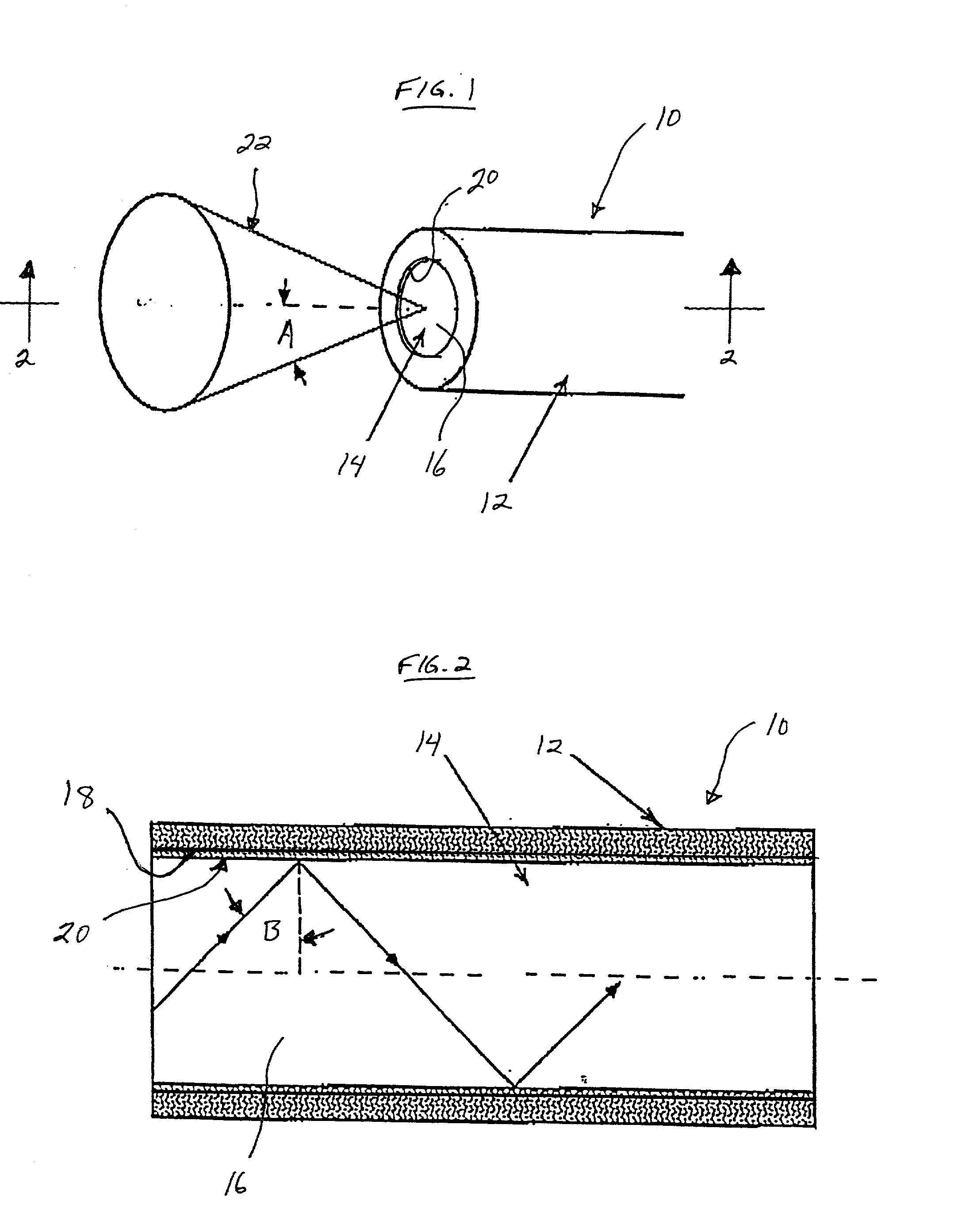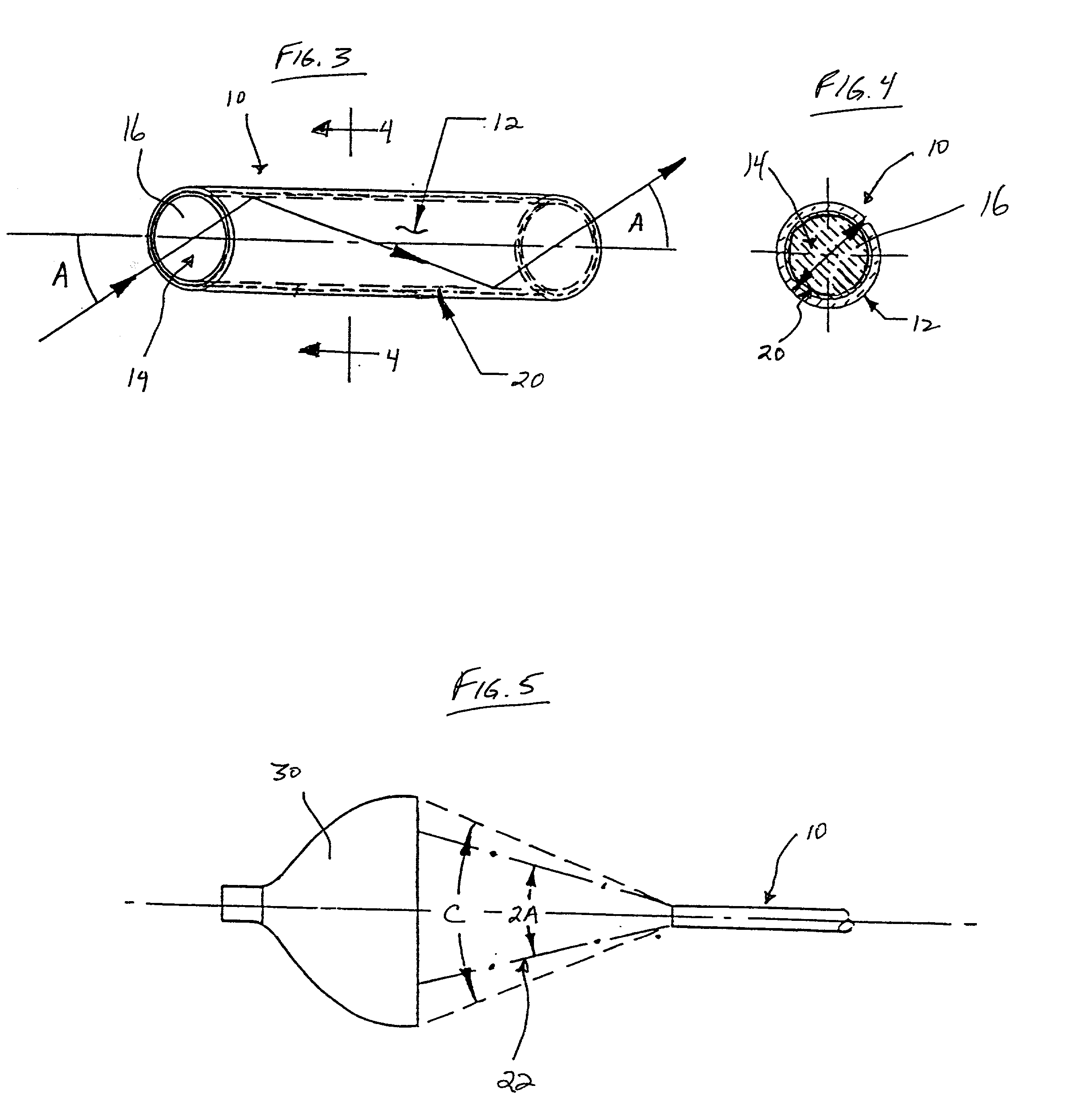Fluid light guide
- Summary
- Abstract
- Description
- Claims
- Application Information
AI Technical Summary
Benefits of technology
Problems solved by technology
Method used
Image
Examples
example ii
[0049] In a test similar to the above Example I, test films were prepared using the ambient temperature / pressure aerogel process that exploits reversible drying shrinkage. A silica gel was derivatized with hexamethyldisilazane, diluted with solvent and liquefied by ultrasound. The sol was then re-concentrated and dip coated onto a silicon substrate. Films were either dried at 100.degree. C. for five hours in nitrogen (film HMDS -100) or pyrolyzed to 450.degree. C. in nitrogen (film HMDS -450). The HMDS-100 film was measured first in air using a spectroscopic ellipsometer. The measurement results were a thickness of 761 nm and a refractive index of 1.07. The film was then put in water in the cell with the incident angle for the ellipsometer being 75.degree., and a total reflection was obtained. Fitting of the ellipsometric parameters gave a refractive index of only 1.09 for the film. Since the refractive index of water is 1.33, the critical angle for total reflection is 90.degree. -s...
example iii
[0051] The refractive index of the deposited coating 20 of the invention may be tailored to a preferred range of 1.1 to 1.2 by utilizing several parameters. These included varying the extent of derivatization of the siloxane polymers in the sol with organosilyl ligands, generally R.sub.3Si-, where R is methyl, ethyl, propyl, phenyl, fluoroalkyl and the like. The refractive index may also be tailored by the size and extent of condensation of the siloxane polymers and the nature of the R group. In preferred form, the optimum synthesis and processing variables achieve a refractive index of 1.12 combined with an acceptance angle of greater than 90.degree..
example iv
[0052] The present invention is directed to producing an interiorly coated tube to be used in the creation of a liquid or gel core light guide with low loss performance on the order of about 50% loss / 100 feet initially over the whole visible region of the electromagnetic radiation spectrum, and ultimately extending into the UV and IR regions of the spectrum. The tube of the invention is mechanically robust and resistant to deformation and abuse. The film 20 performs under normal wear and tear when the waveguide is bent, twisted and subjected to constant movement. In particular, silica aerogel layered on the inside surface of a polyethylene tube yielded significant results.
PUM
| Property | Measurement | Unit |
|---|---|---|
| Fraction | aaaaa | aaaaa |
| Fraction | aaaaa | aaaaa |
| Porosity | aaaaa | aaaaa |
Abstract
Description
Claims
Application Information
 Login to View More
Login to View More - R&D
- Intellectual Property
- Life Sciences
- Materials
- Tech Scout
- Unparalleled Data Quality
- Higher Quality Content
- 60% Fewer Hallucinations
Browse by: Latest US Patents, China's latest patents, Technical Efficacy Thesaurus, Application Domain, Technology Topic, Popular Technical Reports.
© 2025 PatSnap. All rights reserved.Legal|Privacy policy|Modern Slavery Act Transparency Statement|Sitemap|About US| Contact US: help@patsnap.com



